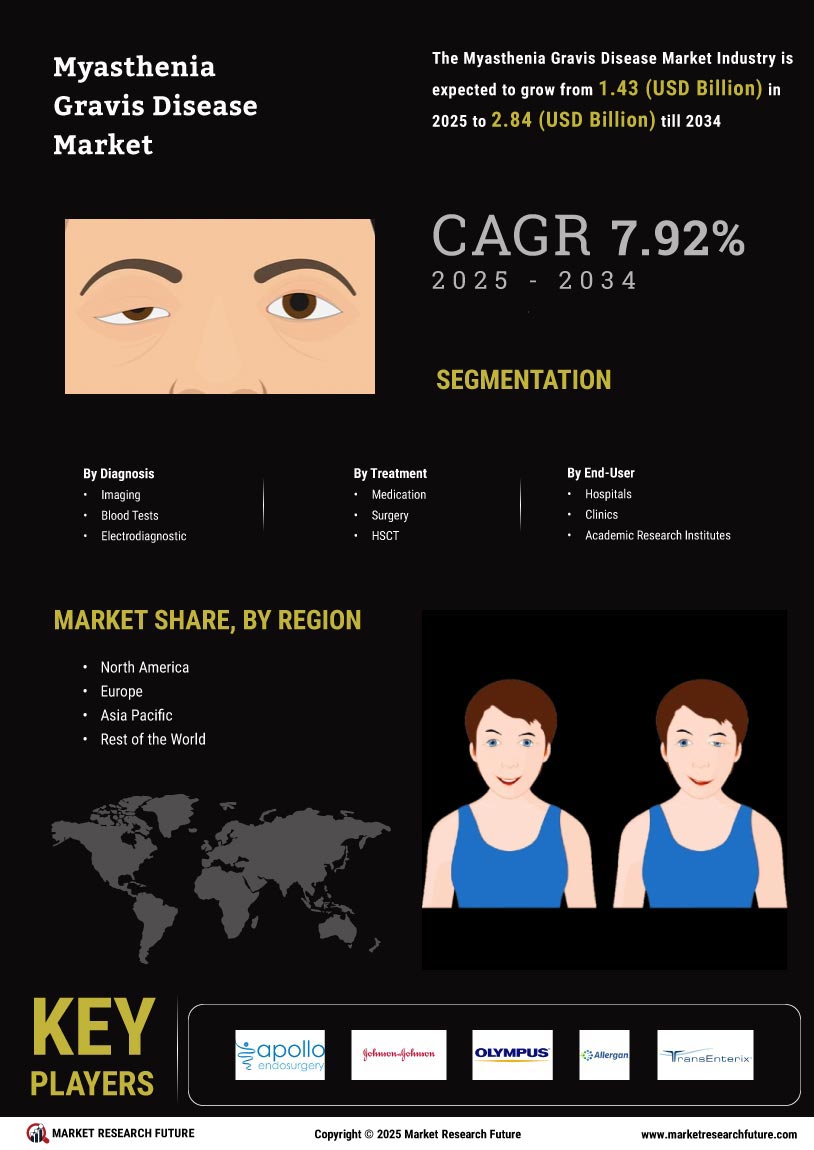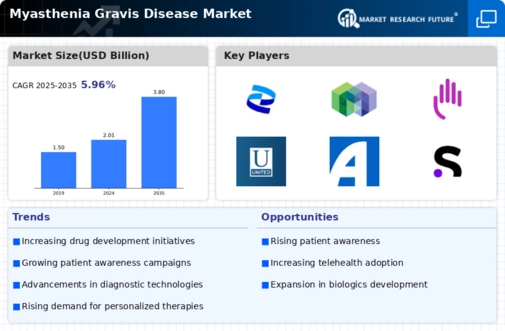Market Trends and Projections
The Global Myasthenia Gravis Disease Market Industry is characterized by various trends that indicate a positive growth trajectory. Current projections suggest that the market will achieve a value of 2.01 USD Billion in 2024, with an anticipated CAGR of 5.96% from 2025 to 2035. This growth is driven by factors such as increasing prevalence, advancements in treatment options, and supportive government policies. The market's expansion reflects the ongoing commitment to improving patient care and developing innovative therapies. As the industry evolves, it is essential to monitor these trends to understand their implications for future market dynamics.
Supportive Government Policies
Government initiatives aimed at improving healthcare access and funding for rare diseases are positively impacting the Global Myasthenia Gravis Disease Market Industry. Policies that promote research funding and support for clinical trials are essential for advancing treatment options. For example, various countries have established rare disease registries and funding mechanisms to facilitate research. These supportive measures are likely to enhance the development of new therapies, thereby expanding the market. As the industry grows, it is anticipated that the market will reach a valuation of 2.01 USD Billion in 2024, reflecting the positive influence of government involvement in healthcare.
Growing Awareness and Diagnosis
The Global Myasthenia Gravis Disease Market Industry benefits from increasing awareness among healthcare professionals and the general public. Enhanced educational initiatives and advocacy efforts are leading to earlier diagnosis and treatment, which is crucial for managing the disease effectively. As more individuals recognize the symptoms and seek medical advice, the number of diagnosed cases is expected to rise. This trend is likely to contribute to the market's expansion, with projections indicating a compound annual growth rate (CAGR) of 5.96% from 2025 to 2035. The focus on early intervention may also lead to improved patient outcomes and reduced healthcare costs.
Advancements in Treatment Options
Innovations in treatment modalities for Myasthenia Gravis are significantly influencing the Global Myasthenia Gravis Disease Market Industry. The development of monoclonal antibodies and immunotherapies has transformed patient management, offering more effective and targeted approaches. For instance, therapies such as eculizumab have shown promising results in clinical trials, leading to improved patient outcomes. As these advanced treatments gain regulatory approval and enter the market, they are expected to contribute to the market's growth trajectory, potentially reaching a value of 3.8 USD Billion by 2035. The ongoing research and development efforts indicate a robust pipeline of therapies that may enhance patient quality of life.
Emerging Markets and Global Expansion
The Global Myasthenia Gravis Disease Market Industry is experiencing growth in emerging markets, where increased healthcare investments and rising awareness are driving demand for treatment options. Countries in Asia-Pacific and Latin America are witnessing a surge in healthcare infrastructure development, which is likely to enhance access to Myasthenia Gravis therapies. This expansion into new markets presents significant opportunities for pharmaceutical companies. As these regions develop, the market is projected to grow, potentially reaching 3.8 USD Billion by 2035. The increasing focus on healthcare access in these areas may lead to improved patient outcomes and a broader market reach.
Increasing Prevalence of Myasthenia Gravis
The Global Myasthenia Gravis Disease Market Industry is witnessing a notable rise in prevalence rates, which is likely to drive market growth. Current estimates suggest that the incidence of Myasthenia Gravis is approximately 20 per 100,000 individuals globally. This increasing prevalence necessitates enhanced healthcare resources and treatment options, thereby expanding the market. As awareness of the disease grows, more patients are diagnosed, contributing to the projected market value of 2.01 USD Billion in 2024. The rising number of patients emphasizes the need for innovative therapies and management strategies, which could further stimulate market dynamics.

















Leave a Comment